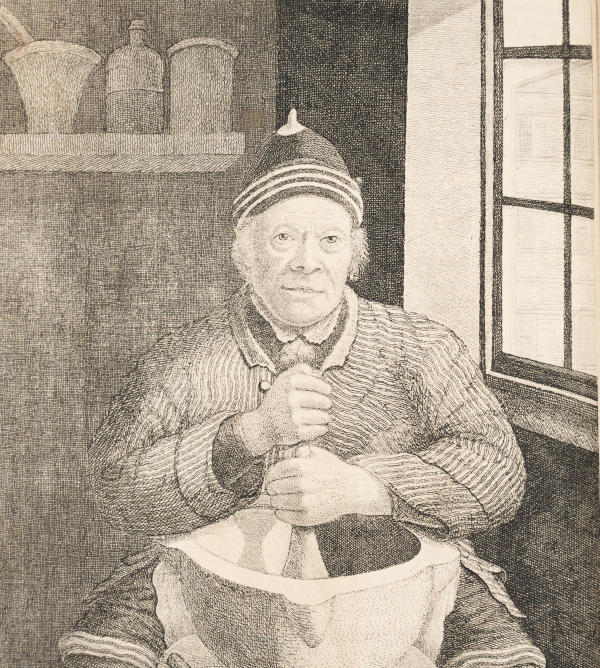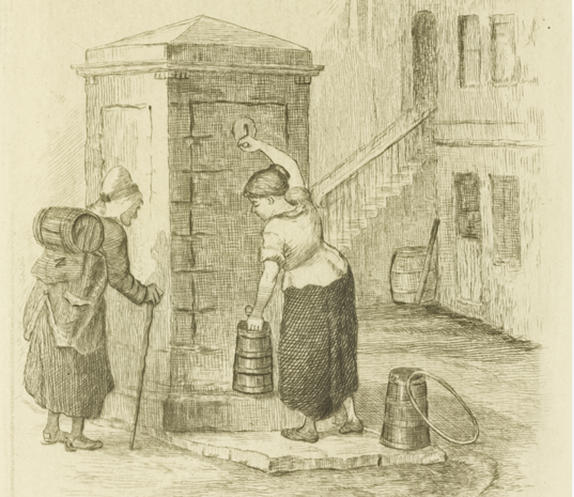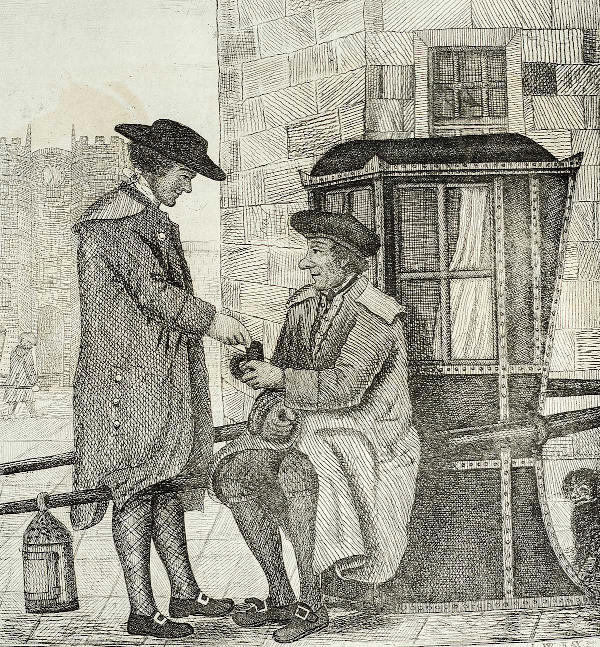OCCUPATIONS
Craftsmen
The dispensary patient records include a number of occupational categories which would commonly be identified as those of craftsmen: two tailors, two bakers, four blacksmiths, one hat maker, one barber, one wright, and, most notably, seven masons and 13 shoemakers.
Each of these occupational categories was associated with an incorporation within the city of Edinburgh. But these individuals weren’t necessarily masters of that trade. They may have held less prestigious positions, such as that of journeyman or apprentice to a master of one of the incorporations. But they might have been neither. The division of individuals into master, journeyman and apprentice had begun to fall apart in the late 1700s. There was a rise in factory labour and a move away from the traditional apprenticeship system based in shops and small businesses to a workshop-based system. The grip of the incorporations over the regulation of such professions declined and, increasingly, tailors and shoemakers were low-paid factory workers who were often reliant on charitable medicine.
Water carriers
Kath Gibson, 32, visited the dispensary in the winter of 1782 suffering from back pains. These were described as having resulted from her work in which she was ‘much employ[e]d in carrying water to different parts of the city’ [add link to record].
Water carriers, or caddies, were necessary because Edinburgh had an unusual number of very tall – up to 14 stories – buildings at the time. These caddies could be found queuing with their water kegs in large numbers at the public wells which much of the city was reliant upon for their water, before travelling throughout the city, along streets and closes, and up and down many flights of stairs, to sell their water to those without access to a private supply.
Chairmen
Chairman was another occupation which was particularly common in Edinburgh, by comparison to other cities. Because of the Old Town’s narrow and winding streets it wasn’t possible to travel around much of the city in a horse and cart, so chairmen were employed instead to carry their employers throughout the city in sedan chairs. Chairmen were commonly highlanders, as they were viewed as more strong and hardy than their lowlands counterparts. Chairmen were exposed to joint pain and injuries, as well as diseases resulting from exposure to cold and wet weather. According to the case notes of one chairman, individuals do not commonly ‘live above five years after entering’ that profession [add link to record].
Labourers
The occupation of manual labourer, one of the most common categories identified in the Edinburgh dispensary case notes, could cover a wide range of practical applications, from agricultural workers to those employed in urban areas on building sites and other forms of construction and manual work. Indeed, an individual labourer could participate in a range of different types of employment depending on the time of year and the availability of work.
Labourer is the occupational category in which a patient’s medical condition was most commonly characterised in the dispensary case notes as having directly resulted from their work, with ‘hard labour’ or ‘exposure to cold’ cited as the most common causes. Conditions described as having been caused by labouring work, however, consistently took the form of chronic rather than acute conditions, including dyspepsia and catarrh.
As the Edinburgh dispensary had no ward beds and no surgical facilities, the resources for the emergency treatment of accidents were meagre. Indeed, it was made explicit in the publicity material for the dispensary that its remit was restricted to chronic conditions, leaving the accident cases and patients with acute conditions to the care of the city’s infirmary.








